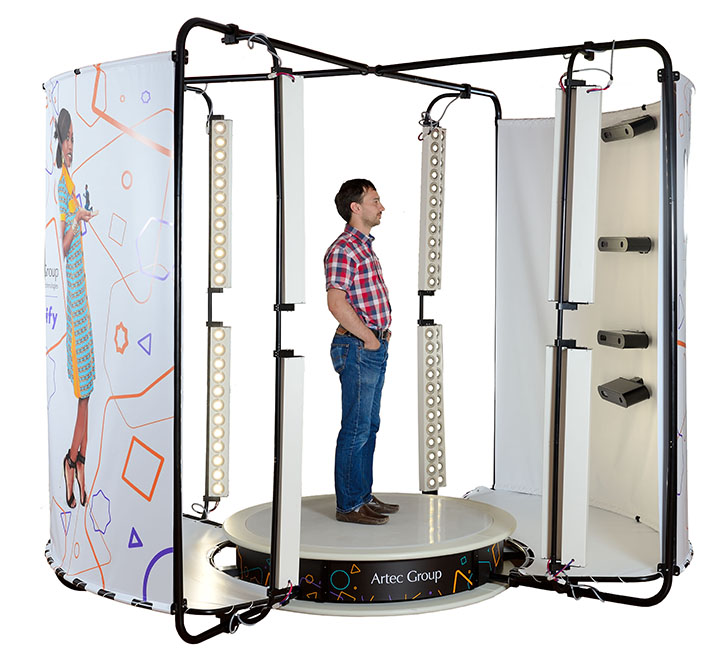
In the past year, the 3D scanning and printing industry has made major advances to the point that the technology exists today to not only scan and print a model of the human body, but also the tissues inside that keep us alive.
The 3D field has now moved beyond the ability to capture images of small manufactured parts (such as those for automobiles and aircraft) into full-color body scanning. One company that is leading the advances in this field is Artec Group, which has introduced its Shapify Booth to capture human images.
The booth is similar in size and shape to the full body scanners used at many airport security checkpoints today. Four wide view high resolution 3D scanners rotate around a person standing still in the center to capture the full image. The whole scan takes about 12 seconds.
Using a high speed processor and 3D modeling software, Artec renders the image in about 3-5 minutes. The file can then be sent to a 3D printer which prints a model figurine of the person scanned that ranges from a few inches to nearly a foot in height.
"This is the first attempt to create a high throughput pipeline for 3D scanning," says Leonid Volkov, Chief Business Development Officer for Artec.
The company's first production batch of fifteen Shapify scanners sold out quickly earlier this year. According to Volkov, they were installed in shopping malls and retail department stores in the U.S. and some European countries. Two hundred more devices will ship in December.
Artec has recently opened its own retail shop on a busy street in downtown Palo Alto, California to showcase the 3D scan and print technology. Customers can stop in and have themselves scanned in a matter of minutes.
A few hours later, they can return to pick up a 3D full-color model figurine of their own image. Prices range from $79 to $199 for the statues.
Seeking to capitalize on growing interest in the 3D scan and print market, Artec is offering different financial models for people who might want to open their own 3D outlets. The Shapify booth can be rented for $10,000 per month or bought outright for $180,000.
New advances in 3D technology are allowing what's inside the body to be printed as well. At the Inside 3D Printing Conference held last month in Santa Clara, California, attendees heard a presentation from Keith Murphy, CEO of Organovo who described his company's pioneering work in yet another growing field: bioprinting.
Founded in 2007, Organovo claims to have successfully printed tissues found throughout the human body. Their goal is to build living, human tissues that function like native tissues and they are specializing in bioprinting markets for the liver and kidney.
"Bioprinted 3D human liver tissues are stable and metabolically active out to 40 days," says Murphy.
The process of actually printing the tissues is complicated. It involves feeding human cells into special printers that configure them into a three dimensional model which duplicates how they function in humans.
If Organovo is successful, their scientists believe that they can delay the need for a liver transplant up to a year by providing printed implantable human tissue. Ultimately, the company hopes to begin printing a fully functioning human liver.
The biotech firm announced this week that they will begin selling 3D printed liver tissues by the end of the year. This is an initial step towards a process following clinical trials where the tissues can be used in patient treatment.
Whether it involves technology that is available now or in the future, 3D printing is clearly beginning to move into the mainstream of our daily lives.














